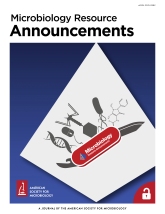
Complete Genome Sequence of Neisseria gonorrhoeae Multilocus Sequence Type ST7363 Isolated from Thailand (2021)
Title : Complete Genome Sequence of Neisseria gonorrhoeae Multilocus Sequence Type ST7363 Isolated from Thailand
Researcher : Thitima Cherdtrakulkiat, Thidathip Wongsurawat, Piroon Jenjaroenpun, Sawannee Sutheeworapong, Wanna Leelawiwat, Joseph V. Woodring, Eileen F. Dunne, John R. Papp, Somporn Srifuengfung and Chanwit Tribuddharati
Link to article: Microbiology Resource Announcements Vol.10 No.e00573-21 Page. 1-4. https://doi.org/10.1128/mra.00573-21
Journal : Microbiology Resource Announcements / in Scopus
Citation : Cherdtrakulkiat T., Wongsurawat T., Jenjaroenpun P., Sutheeworapong S., Leelawiwat W., Woodring, Joseph V. , Dunne, Eileen F. , Papp, John R. Srifuengfung S. & Tribuddharati, C. (2021). Complete genome sequence of neisseria gonorrhoeae multilocus sequence type ST7363 isolated from Thailand. Microbiology Resource Announcements, 10(e00573-21), 1-4. https://doi.org/10.1128/mra.00573-21
ฐานข้อมูลงานวิจัย มหาวิทยาลัยสยาม : https://e-research.siam.edu/kb/complete-genome-sequence-of-neisseria-gonorrhoeae/
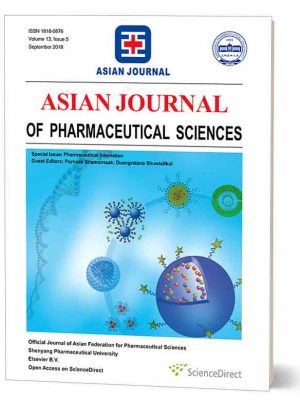
Design and characterization of monolaurin loaded electrospun shellac nanofibers with antimicrobial activity (2018)
Abstract
The aim of this study was to develop the water compatible form of coconut oil through nano-emulsification. The effect of different types and amounts of surfactants on the physical characteristics of nanoemulsions containing coconut oil was investigated. Coconut oil nanoemulsions containing varied amounts of surfactants including polyethylene glycol octyl phenyl ether (PGO), polyoxyethylene sorbitan monostearate (POS), polyethylene glycol hydrogenated castor oil (PHC), sodium lauryl sulfate (SLS) and poloxamer 407 (PLX) were formulated and comparatively evaluated for their physical properties. The results showed that the coconut oil nanoemulsions using PGO, POS and PHC as surfactants exhibited low percent creaming index indicating excellent stability, while those containing SLS and PLX demonstrated the higher percent creaming index suggesting lesser physical stability. The droplet sizes of nanoemulsions consisting of 5% (w/w) PGO, POS and PHC were 22.843, 4.458 and 0.162 µm, respectively. Thus, coconut oil nanoemulsions with the smallest size could be obtained when PHC was applied. Furthermore, the droplet size of nanoemulsions decreased from 33 µm to less than 200 nm with an increase in the amount of PHC from 1% to 10% (w/w). Additionally, the properties of coconut oil based nanoemulsions containing PHC were not changed through temperature cycling test. From these results, it was suggested that the fabrication of stable coconut oil nanoemulsions with small particle size could be easily achieved by using 5% (w/w) PHC as a surfactant. The knowledge gained from the study might provide the basic guideline for the fabrication of stable nanoemulsions for food, cosmetic and pharmaceutical fields in the future.
Link to Publication: https://www.sciencedirect.com/science/article/pii/S1818087617308267
Bibliography :Sirikarn Pengon, Nawinda Chinatangkul, Chutima Limmatvapirat, Sontaya Limmatvapirat. (2018). The effect of surfactant on the physical properties of coconut oil nanoemulsions. Asian Journal of Pharmaceutical Sciences, 409-414.
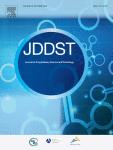
Designing electrospun shellac nanofibers with mupirocin using the Box-Behnken approach for topical wound care (2022)
Title : Designing electrospun shellac nanofibers with mupirocin using the Box-Behnken approach for topical wound care
Researcher : Nawinda Chinatangkul, Sirikarn Pengon,Wantanwa Krongrawa, Siraprapa Chansatidkosol, Chutima Limmatvapirat and Sontaya Limmatvapirat
Link to article: Journal of Drug Delivery Science and Technology, Volume 76, Issue 103720, 31 August 2022, Pages 1-8. https://doi.org/10.1016/j.jddst.2022.103720
Citation : Chinatangkul N., Pengon S., Chatsuwan T., Krongrawa W., Chansatidkosol S., Limmatvapirat C. and Limmatvapirat S. (2022). Designing electrospun shellac nanofibers with mupirocin using the Box-Behnken approach for topical wound care. Journal of Drug Delivery Science and Technology, 76(103720), 1-8. https://doi.org/10.1016/j.jddst.2022.103720
Journal : Journal of Drug Delivery Science and Technology / in Scopus
ฐานข้อมูลงานวิจัย มหาวิทยาลัยสยาม : https://e-research.siam.edu/kb/designing-electrospun-shellac/

Determination of mono-, di-, and trilaurin in modified coconut oil using HPLC–ELSD (2016)
Abstract
Modified coconut oil (MCO) enriched with monolaurin (ML) was prepared by the glycerolysis of coconut oil [1]. Glycerolysis converts dilaurin (DL) and trilaurin (TL) into ML, the lauric acidmonoglyceride. ML has been found to have antiviral, antibacterial and antifungal activities[2]. According to the antimicrobial activity, the glyceride composition of MCO was determined. The concentrations of ML, DL, and TL in MCO were analyzed using high-performance liquid chromatography–evaporative light scattering detector (HPLC–ELSD).
The HPLC–ELSD analyses were performed using an HPLC 1200 series equipped with an ELSD and a ZORBAX Eclipse Plus C18 column (4.6 × 250 mm, 5 µm) from Agilent Technologies Inc. The mobile phase consisted of 0.01% (v/v) acetic acid in acetonitrile(solvent A) and acetone (solvent B) and was degassed by ultrasonic bath prior to use. The HPLC column temperature was 25 °C. The mobile phase was maintained at a flow rate of 1.0 ml/min with the following gradient condition: solvent A:solvent B (90:10 v/v) from 0 to 5 min to solvent A:solvent B (70:30 v/v) from 5 to 10 min to solvent A:solvent B (50:50 v/v) from 10 to 15 min to solvent A:solvent B (30:70 v/v) from 15 to 20 min to solvent A:solvent B (20:80 v/v), and then held for 10 min. The equilibration time between runs was 10 min and the injection volume used was 10 µl. The temperature of the nebulization was set at 40 °C and nitrogen gas was 3.5 bar.
The ELSD were capable of a linear response (R2 > 0.9995) independent of individual glyceride molecular structures at concentrations between ~0.02 and 0.40 mg/ml. Intra- and inter-day reproducibility (n = 5) were evaluated under the optimized conditions. The relative standard deviations for glycerides were less than 2.45%. The detection limits (LODs) and the quantification limits (LOQs) were lower than 0.054 and 0.162 mg/ml, respectively. The efficiency of this method, measured through the recoveries, was higher than 96.06%. The elution order of the standards was ML < DL < TL as shown in Fig. 1. The DL and TL standards eluted after the ML standard, indicating that the hydroxyl moiety on the glycerol backbone contributed significantly to retention. The concentrations of ML, DL, and TL of MCO derived from various conditions of glycerolysis were in the ranges of 102.70–247.25 mg/ml (ML), 52.65–79.87 mg/ml (DL), and 12.27–39.60 mg/ml (TL).
Keywords: Monolaurin, Dilaurin, Trilaurin, Modified coconut oil, HPLC–ELSD
Link to Publication: https://www.sciencedirect.com/science/article/pii/S1818087615001889
Bibliography : Juthaporn Ponphaiboon, Sirikarn Pengon, Amornrat Chaidedgumjorn, Sontaya Limmatvapirat and Chutima Limmatvapirat. (2016). Determination of mono-, di-, and trilaurin in modified coconut oil using HPLC–ELSD. Asian Journal of Pharmaceutical Sciences, 11(1), 223-224. (conference abstract).

Development of cycloguanil and pyrimethamine derivative as dihydrofolate reductase inhibitors (2019)
ผู้เขียนบทความ: ดร. วรท โชติปฏิเวชกุล และ พ.ญ อัญญา โชติปฏิเวชกุล
บทคัดย่อ:
มาลาเรียเป็นปัญหาที่สำคัญปัญหาหนึ่งที่พบบนโลกเพราะมีประชากรที่ติดเชื้อและตายด้วยโรคนี้มากว่าล้านคนต่อปี ซึ่งสาเหตุการติดเชื้อนี้เกิดจากเชื้อโปรโตซัวสายพันธุ์ Plasmodium โดยเฉพาะเชื้อสายพันธุ์ Plasmodium falciparum โดย pyrimethamine และ cycloguanil ถูกนำมาใช้ในการรักษาโรคไข้มาลาเรีย แต่กลับพบว่าค่าการออกฤทธิ์ยับยั้ง PfDHFR ของยานั้นมีค่าลดลงเนื่องจากการกลายพันธุ์ของ PfDHFR ดังนั้นจึงเป็นที่มาของการศึกษาอนุพันธ์ของ pyrimethamine และ cycloguanil เพื่อเป็นแนวหาตัวยับยั้งใหม่ที่สามารถออกฤทธิ์ยับยัง PfDHFR
คำสำคัญ: มาลาเรีย, dihydrofolate reductase, pyrimethamine, cycloguanil
Link to Academic article: Development of cycloguanil and pyrimethamine derivative as dihydrofolate reductase inhibitors
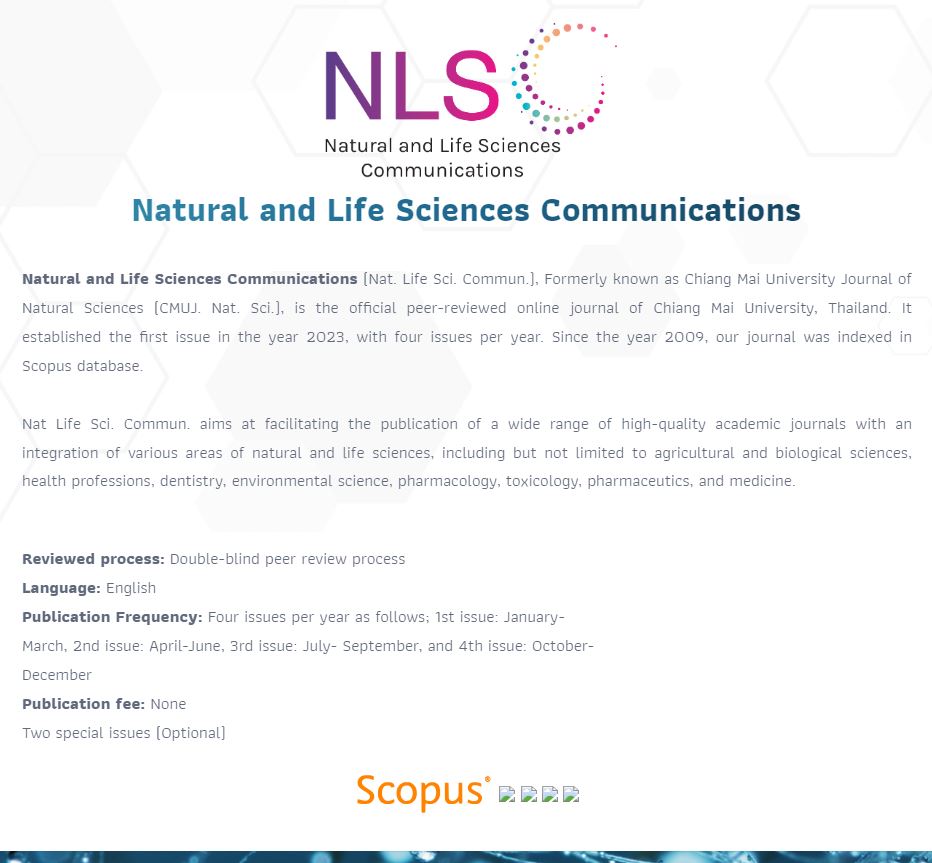
Development of Gummy Jelly Incorporated with Lysiphyllum strychnifolium Leaf Extract and Its Antioxidant and α-Glucosidase Inhibitory Activities (2023)
Title : Development of Gummy Jelly Incorporated with Lysiphyllum strychnifolium Leaf Extract and Its Antioxidant and α-Glucosidase Inhibitory Activities
Researcher : Thavaree Thilavech, Achira Sutiyaporn, Pimpikar Kanchanadumkerng, Vilasinee Hirunpanich Sato, Warisara Parichatikanond, Phennapa Charoenwiwattanakij & Savita Chewchinda
Link to article : Natural and Life Sciences Communications, Volume 22, Issue 2, April-June 2023 pages 1-14. https://doi.org/10.12982/NLSC.2023.019
Journal : Natural and Life Sciences Communications / in Scopus
Citation : Thilavech T, Sutiyaporn A, Kanchanadumkerng P, Sato V.H., Parichatikanond W, Charoenwiwattanakij P & Chewchinda S. (2023). Development of Gummy Jelly Incorporated with Lysiphyllum strychnifolium Leaf Extract and Its Antioxidant and α-Glucosidase Inhibitory Activities. Natural and Life Sciences Communications, 22(2), 1-14. https://doi.org/10.12982/NLSC.2023.019
ฐานข้อมูลงานวิจัย มหาวิทยาลัยสยาม : https://e-research.siam.edu/kb/development-of-gummy-jelly-incorporated/
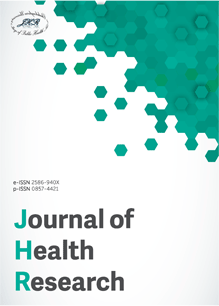
Development of Multidisciplinary Care Model with Participatory Action Research for Heart Failure Clinic in Bangkok, Thailand (2023)
Title : Development of Multidisciplinary Care Model with Participatory Action Research for Heart Failure Clinic in Bangkok, Thailand
Researcher : Usasiri Srisakul,Warawut Umpornwirojkit, Supaporn Pattanasan,Apichot So-ngern, Charlermsri Pummangura & Sarawut Siwamogsatham
Link to article: Journal of Health Research, Volume 37, Issue 5, pages 358-371. https://digital.car.chula.ac.th/jhr/vol37/iss5/11/
Journal : Journal of Health Research / Scopus
Citation : Srisakul U., Umpornwirojkit W., Pattanasan S., So-ngern A., Pummangura C., & Siwamogsatham S. (2023). Development of multidisciplinary care model with participatory action research for heart failure clinic in Bangkok, Thailand. Journal of Health Research, 37(5), 358-371.
ฐานข้อมูลงานวิจัย มหาวิทยาลัยสยาม : https://e-research.siam.edu/kb/development-of-multidisciplinary-care/
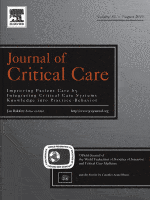
Doripenem dosing regimens in Asian critically ill patients with continuous renal replacement therapy (2019)
Title : Doripenem dosing regimens in Asian critically ill patients with continuous renal replacement therapy (2019)
Researcher : Chaijamorn, W., Puchsaka, P.W., Pattharachayakul, S., …Boonpeng, A., Pummangura, C.
Abstract : Antibiotic dosing in critically ill patients with continuous renal replacement therapy (CRRT) is still challenging. Pharmacokinetic changes in critically ill patients such as increased volume of distribution and decreased protein binding affinity affect hydrophilic drug dosing regimens [1]. Consequently, we might prescribe inadequate doses of antimicrobial agents in patients with CRRT [1] which can affect the morbidity and mortality associated with sepsis [2]. Requirement of loading dose and higher maintenance doses for this group of patients has been suggested to achieve pharmacokinetic and pharmacodynamic targets [3].
Continuous renal replacement therapy has been utilizing to effectively remove fluid and waste products in this group of patients due to hemodynamic instability [4]. Doripenem is a water-soluble carbapenem antibiotic and commonly used for Gram negative infection in intensive care unit (ICU) [5]. It can be removed by CRRT due to small molecular weight (438.52 Da) and low volume of distribution (16.8 L) [6].
The recommended dosing regimens from clinical resources are mostly from the pharmacokinetic studies in Western patients and there were a few studies conducted in Asian population [[7], [8], [9], [10], [11], [12]]. No suggested doripenem dosing regimens for CRRT patients based on Asian pharmacokinetic parameters exists. This study aimed to define the optimal doripenem dosing regimens using pharmacokinetic parameters from Asian population and body weights of Asian critically ill patients and to evaluate the probability of target attainment (PTA) of recommended dosing regimens from available clinical resources.
Link to article: https://doi.org/10.1016/j.jcrc.2019.04.030
Journal : Journal of Critical Care, 2019, 52.
Bibliography : Chaijamorn, W., Puchsaka, P., Pattharachayakul, S., Charoensareerat, T., Srisawat, N., Boonpeng, A., & Pummangura, C. (2019). Doripenem dosing regimens in Asian critically ill patients with continuous renal replacement therapy. Journal of Critical Care, 52, 233–236.

Drug-induced weight gain (2560)
Drug-induced weight gain (2560)
ผู้เขียนบทความ: ดร.ภญ.กมลวรรณ ตันติพิวัฒนสกุล
บทคัดย่อ:
Weight gain (ภาวะน้ำหนักตัวเพิ่มขึ้น) เป็นภาวะที่เกิดขึ้นทั้งจากปัจจัยทางพันธุกรรมและสิ่งแวดล้อม บ่งบอกถึงความไม่สมดุลของจำนวนพลังงานที่รับเข้าสู่ร่างกายต่อวัน และที่ถูกเผาผลาญไป เป็นสิ่งสะท้อนถึงการดำเนินชีวิตประจำวัน และบางครั้งก็เป็นผลไม่พึงประสงค์ที่เกิดขึ้นจากการใช้ยา นำไปสู่ภาวะน้ำหนักเกิน หรือโรคอ้วนซึ่งมีผลต่อสุขภาพที่จะตามมาอีกหลายโรค เช่น ความดันโลหิตสูง เบาหวาน โรคหัวใจและหลอดเลือด เมื่อพิจารณาข้อมูลทางระบาดวิทยา จากแนวทางของ The national institutes of health กำหนดให้ ค่า body mass index (BMI) ที่มากกว่า 25 ถือว่าเป็นภาวะน้ำหนักตัวเกิน และถ้ามากกว่า 30 ถือว่าเป็นโรคอ้วน (เกณฑ์สำหรับประชากรในเอเชีย จะใช้ค่าที่มากกว่า 22.9 ถือว่าน้ำหนักตัวเกิน และค่าที่มากกว่า 25 ถือว่าเป็นโรคอ้วน) ในประเทศสหรัฐอเมริกา จะพบว่า ประชากรประมาณร้อยละ 35.5 กำลังอยู่ในภาวะน้ำหนักเกินและโรคอ้วน องค์การอนามัยโลกรายงานข้อมูลของประเทศในกลุ่มเอเชียตะวันออกเฉียงใต้ว่า ประเทศมาเลเซีย มีประชากรผู้ใหญ่ที่มี BMI มากกว่า 25 มีจำนวนถึงร้อยละ 44.2 และ BMI มากกว่า 30 มีจำนวนถึงร้อยละ 14 และประเทศไทยรองลงมาคือ มีประชากรผู้ใหญ่ที่มี BMI มากกว่า 25 มีจำนวนถึงร้อยละ 32.2 และ BMI มากกว่า 30 มีจำนวนถึงร้อยละ 8.8 ตามลำดับ นับว่าเป็นประเด็นทางสาธารณสุขที่กำลังวิกฤตอยู่ในขณะนี้
คำสำคัญ:
Link to Academic article: Drug-induced weight gain

Ecteinascidin 770, A tetrahydroisoquinoline alkaloid, targeting the bacterial cell division protein FtsZ (2018)
Title : Ecteinascidin 770, A tetrahydroisoquinoline alkaloid, targeting the bacterial cell division protein FtsZ
Researcher : Phennapa Charoenwiwattanakij, Jaturong Pratuangdejkul, Montree Jaturanpinyo, Witaya Lowtangkitcharoen, Khanit Suwanborirux and Veena Nukoolkarn
Link to article : Chiang Mai Journal of Science, 2018, 45(7), pp. 2566–2580. https://epg.science.cmu.ac.th/ejournal/journal-detail.php?id=9652
Journal : Chiang Mai Journal of Science / in Scopus
Citation : Charoenwiwattanakij, P., Pratuangdejkul, J., Jaturanpinyo, M., Lowtangkitcharoen, W.,Suwanborirux, K., & Nukoolkarn, V., (2018). Ecteinascidin 770, A tetrahydroisoquinoline alkaloid, targeting the bacterial cell division protein FtsZ. Chiang Mai Journal of Science, 45(7), 2566–2580.
ฐานข้อมูลงานวิจัย มหาวิทยาลัยสยาม : –